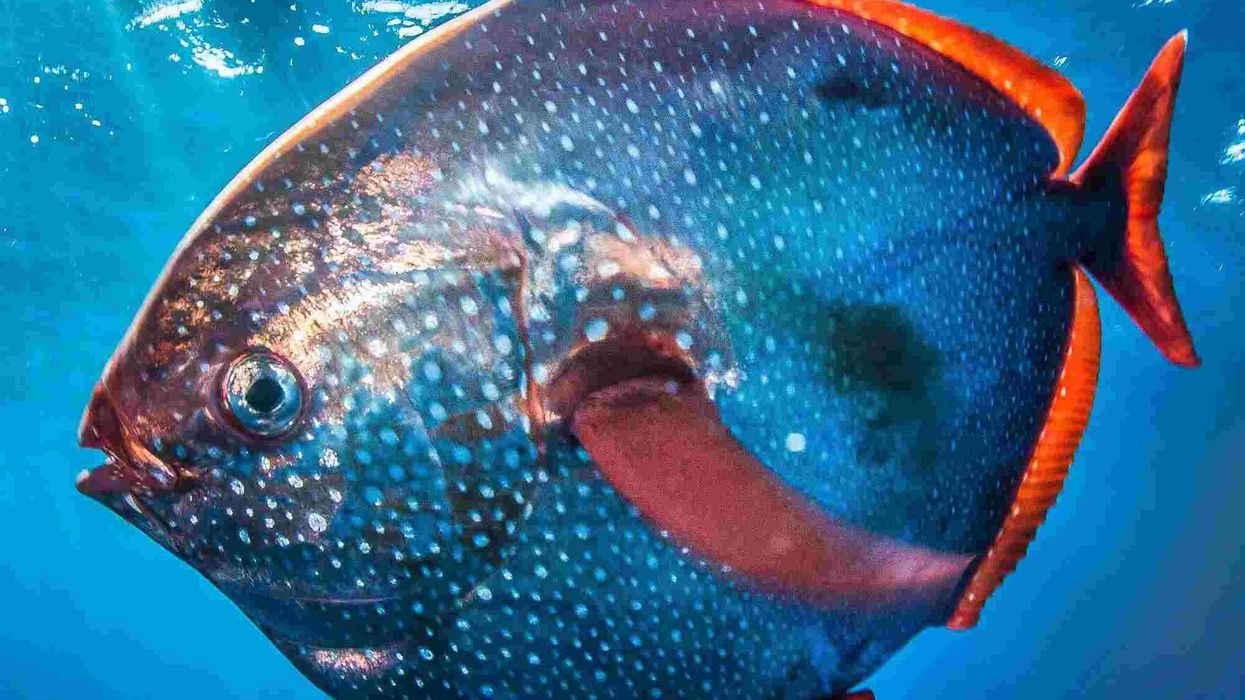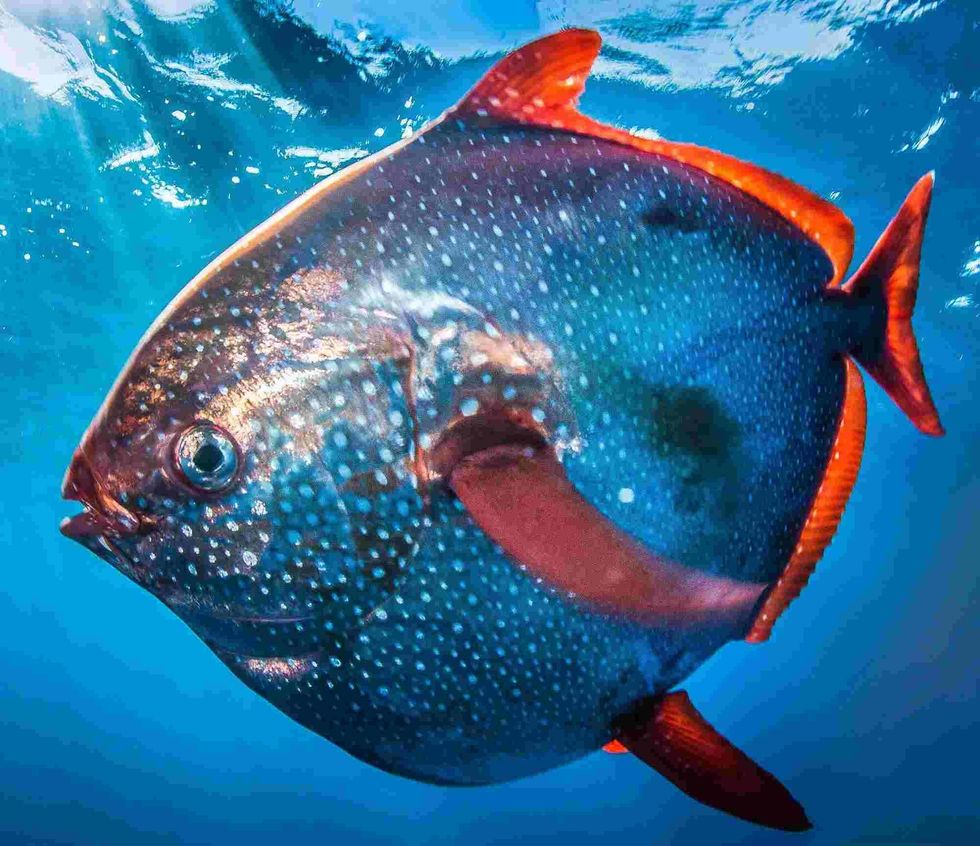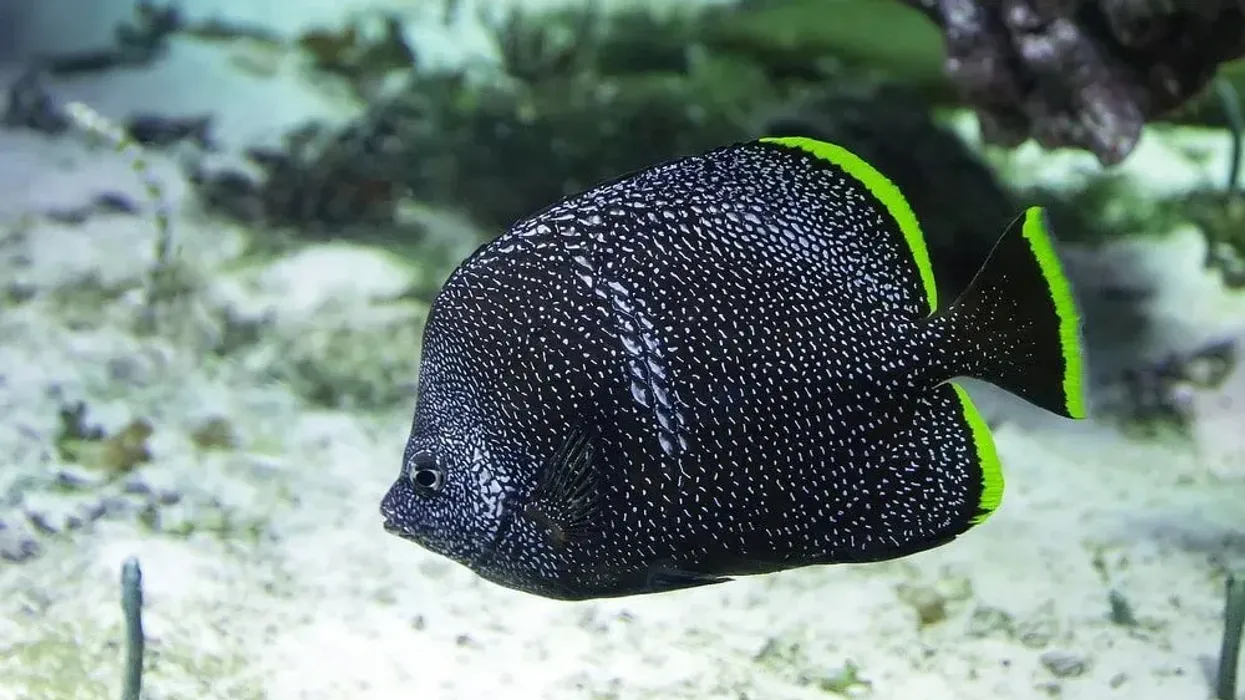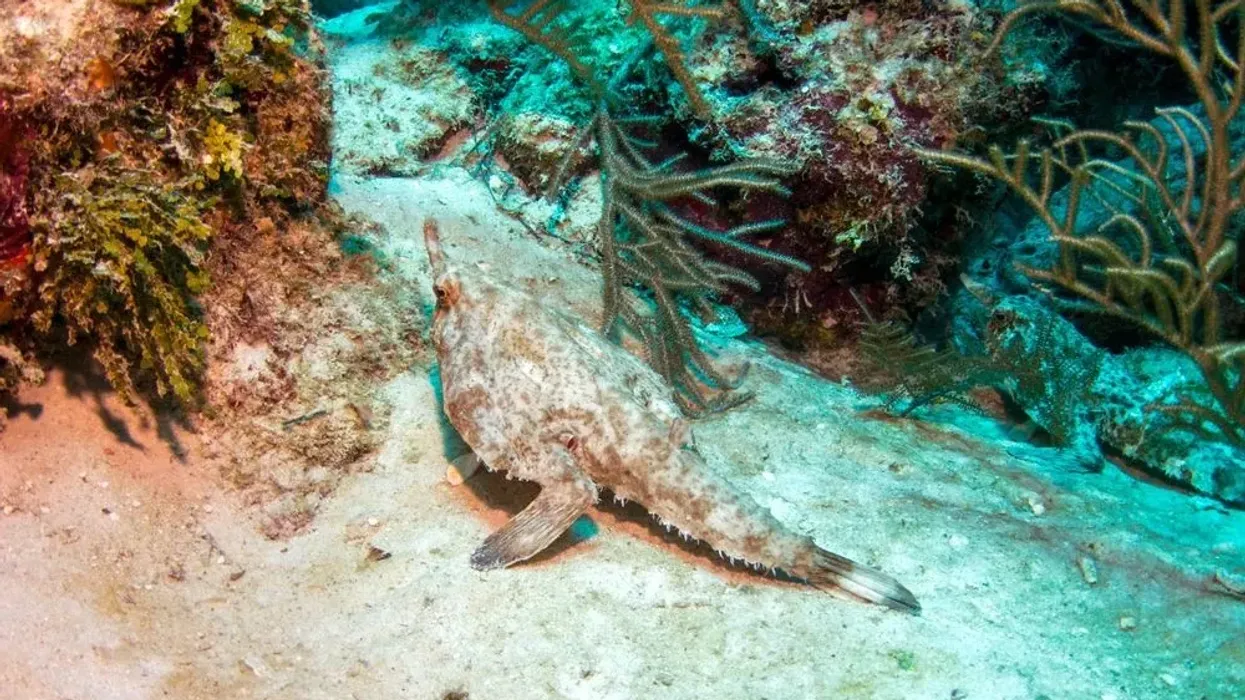Moonfish, the name sounds different, right? This was a recent discovery by the National Oceanic and Atmospheric Administration (NOAA), also known as NOAA Southwest Fisheries Science Center in the U.S. The fact that amazed scientists is that it is also a mammal, just like humans, other animals, and birds.
Moonfish belongs to the marine fish species Lampris guttatus. Lampris guttatus happens to be a fully warm-blooded fish.
The warm-bloodedness of the opah (Lampris guttatus) is due to the heat exchange system present in the fish's gills. The Hawaiian moonfish market has been estimated at more than $5 million. Almost all the opah fish sold in the U.S. is harvested from Hawaii.
As this opah species resides in deep waters, scientists have been unable to understand a lot about its biology. Their strong pectoral fins allow this fish to swim at a good speed even at great depths.
Here are some of the most interesting facts and details about the giant moonfish for your perusal. After reading these fascinating moonfish facts, do check our other articles on lumpfish and moray eels as well.
Moonfish Interesting Facts
What type of animal is a moonfish?
Moonfish belongs to the category Actinopterygii. Opah fishes belong to the family Lampyridae. As per scientists, giant moonfish are warm-blooded species, the first known instance among fish. NOAA Fisheries'Southwest Fisheries Science Center is the authority on this species. The moonfish is one of the most popular species in Hawaii.
What class of animal does a moonfish belong to?
Moonfish come under the class Actinopterygii and are also known by their scientific name Lampris guttatus. As per NOAA Fisheries'Southwest Fisheries Science Center, Lampris guttatus is said to have whole-body endothermy, where the entire core of the body sustains a temperature of around 5 °C above the surrounding water.
How many moonfish are there in the world?
There are not many studies present on the population of moonfish throughout the world, however, the IUCN has classified them as ‘Not Extinct’, so it is safe to assume their population is not threatened.
Where does a moonfish live?
As per NOAA Fisheries' Southwest Fisheries Science Center, moonfish are found in the western Atlantic Ocean. These fish are usually found in deep waters within the oceans and hence scientists have not been able to determine other important aspects of their habitat.
It is assumed that this fish with large eyes can regulate its body temperature and can be sharing its general characteristics with other Pacific Ocean pelagic fish species.
What is a moonfish's habitat?
According to the NOAA FisheriesSouthwest Fisheries Science Center, this species resides in the open ocean or aquatic habitats at depths of around 1600 ft or below in the Atlantic Ocean, like other pelagic fish species.
Who do moonfish live with?
Moonfish are deep-water predators who have evolved into fantastic hunters who can prey on various aquatic species in the dark and deep waters of the Atlantic Ocean. As the fish resides at great depths, not a lot of information is available about their companions.
It is assumed that these fish are solitary creatures and do not swim in schools. But it is believed that opah fish can school with tuna and other scombrids.
How long does a moonfish live?
Moonfish mature at a relatively young age of four or five years. Their approximate life span is estimated to be 13 or 14 years. However, true longevity is unverified as this fish rarely comes to the surface and instead prefers the deep waters of the ocean.
How do they reproduce?
The moonfish reproduce through the process of spawning. As per reports, this fish species is known to spawn over vast areas, especially in warm surface waters. In the tropical regions, the spawning season for moonfish lasts throughout the year.
This species has impressive reproductive rates and during the breeding season, the female can spawn several times. After the larvae hatch from the eggs, they grow and transform at a rapid speed. But after the transformation into the deep body's form is complete, the rate of growth slows down.
What is their conservation status?
As per reports, the conservation status of opah says that it is Not Extinct. It is assumed that the number of this opah species is steady in the oceans, hence there are no concerns regarding their survival.
Moonfish Fun Facts
What do moonfish look like?

Moonfish has a large, circular, laterally compressed body. It has a tall body with narrow sides. Their scales are light orange colored with white spots. Their fins have a vibrant orange coloration and their cheeks are dark red. The opah has sickle-shaped pectoral fins and a forked tail.
How cute are they?
Opah fish are orange with white spots all over their body. Their vibrant colors are attractive to the eyes, making them look cute among other fish species.
How do they communicate?
Opah fish use acoustic sound for communicating among themselves for feeding, hostility, or wooing behavior.
How big is a moonfish?
It is a deep-bodied fish with a small toothless mouth. Opah (L. guttatus) is approximately growing up to 7 ft in length and can weigh around 300 lb. The southern opah is smaller, with an average size of 43 in and a weight of around 66 lb.
How fast can a moonfish swim?
As per NOAA Fisheries'Southwest Fisheries Science Center, the pectoral fins aid the opah's speed and way of life. Those muscles cover about 17 % of the opah's body weight. They can swim at high speeds and can also travel long distances.
How much does a moonfish weigh?
A moonfish weighs about 300 lb, and even larger specimens of the opah species have been reported in the open waters.
What are the male and female names of the species?
There are no special names assigned to the male and female fish of this species.
What would you call a baby moonfish?
The baby moonfish is known as larvae as soon as it is born and when it grows further it is known as a fry.
What do they eat?
Opah fish are carnivorous. Their main prey is small fish, squid, krill, cuttlefish, etc. Though they are big, opah fish feed predominantly on smaller organisms, as they possess small jaws and are toothless.
Are they eaten by humans?
Moonfish taste a mixture between tuna and swordfish. The flesh is edible and remains quite thick when cooked. Black moonfish is a popular food in Hawaii. Their cheeks yield dark red meat which turns to white on cooking. Moonfish price varies according to the color and size of every individual fish.
Would they make a good pet?
They cannot be kept as a pet as they are used to living in deep waters and are too big to stay in a home aquarium. Hence, you should be able to invest in a suitable moonfish tank before you decide to adopt this fish as a pet.
Did you know...
This sea fish is a warm-blooded or endothermic species. This implies that it can control its body temperature. This adaptation allows them to withstand the cold temperatures of the ocean water. Their capacity to retain their body heat as compared to surrounding water is a vital benefit.
During hunting in cold, deep waters, these fish can travel much faster than most animals at that depth. This enables them to find prey and surpass other predators.
What part of a car is a moonfish similar to?
Like a car radiator, it has a natural adjustment that preserves heat. The unusual location of the heat switch within the gills takes up nearly the fish's entire body to keep a raised temperature, known as endothermy, in the cold depths of ocean water.
Do moonfish migrate?
During the night, the fish migrate vertically to more temperate waters. In the daytime, opah moves farther down to hunt for prey in the cool, deep waters.
Here at Kidadl, we have carefully created lots of interesting family-friendly animal facts for everyone to discover! Learn more about some other fish including the cherry barb and the turbot.
You can even occupy yourself at home by drawing one of our Moonfish coloring pages.










